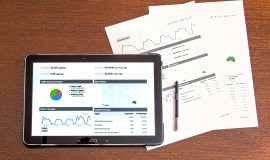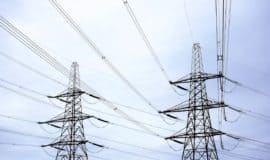Portfolio
Filter by Category
Filter by Date
Search
I have been a professional freelance writer for more than 20 years and have written for a variety of publications and companies including Better Homes and Gardens, GE, Intel and The Washington Post. If you’re looking for high quality, professional writing tailored to you and your style, I deliver outstanding results.


Advances in Fraud Analytics Promise to Stop Crooks, Not You

How Investors Can Make The Most of Low Oil Prices
As the price of oil hovers around $50 a barrel, its lowest point in six years, some experts argue that now is a good time to invest in oil-related stocks and funds. But Mike Loewengart, director of investment strategy at E*TRADE Capital Management, LLC, says investors shouldn’t see the relatively low price as a green light to rush into oil investments.
That’s not to say that oil can’t generate a healthy return. In fact, if you had invested $1,000 in an investment tracking the S&P 500 Equal Weight Energy Index on Jan. 1, 2009, when oil was about $35 per barrel, your money would have more than doubled by now — even with the recent drop in prices, Loewengart says.
But the potential for growth comes with the potential for loss, says Loewengart, who has additional advice for those interested in testing the market, perhaps for the first time.
Expect Price Swings
If you invest in oil, expect wide swings in price. For example, in recent months, different experts have predicted that oil may hit $20 a barrel and $200 a barrel.
“Expect volatility,” Loewengart says. “See past what might happen in the short term and focus on the longer term.”
Seek Diversity
Consider your background, skill sets and how much time and effort you’re willing to put into following your investments, Loewengart says. If you’re not willing to put the time into researching individual stocks or other investments, then broad-based energy related investments are better choices, he says.
For a more conservative move into oil-related investments — and remember “conservative” is relative in this sector — consider investing in the largest players, Loewengart says.
“These relatively stable, diversified production companies didn’t rise as much as the riskier players,” he says. “But they also have fallen only about 10 percent from the peak. They’re more diversified so their price movements are less correlated to the price of oil than the smaller players.”
Options for Dividends
These bigger, diversified companies also are a good option for investors looking for dividends. No matter where the price of oil goes, these companies are likely to maintain regular payouts, Loewengart says.
Another option for those seeking dividends is investing in master limited partnerships (MLP) — in firms that transport and store oil and natural gas. An MLP is a type of limited partnership that is publicly traded. MLPs offer the tax benefits of a limited partnership combined with the liquidity of publicly traded securities.
“MLPs are required to pay out most of their earnings to shareholders,” he says. “Because of that, they produce a very healthy yield. Last year, they were very popular as people searched for yield investments.”
But MLPs are not low risk, he cautions. Prices have dropped about 15 percent from the mid-2014 high, he says. If oil prices continue to drop, producers may demand lower rates for transport, which could impact these energy sector MLPs, he says.
Riskier Investments
Slightly less conservative are investments in smaller companies that that are either directly or indirectly involved with exploration and production, he says. Because these businesses are more narrowly focused, their securities are more closely correlated with the price of oil, offering larger risk-reward opportunities, he says.
“Small cap players rose almost 400 percent from 20091,” Loewengart says. “Conversely, they have fallen the most. Because they are so closely tied to the price of the commodity, there would be a fair amount of speculation with investing in those companies.”
Moving up the risk ladder, oil-related bonds offer income — along with risk, he says.
“If the price of oil continues to fall, these companies will go out of business,” he says. “In these cases, a bond holder will get nothing or very little.”
When to Hire a Manager
Bond investments in the oil sector are more challenging for individual investors, he says. “These fixed-income markets are pretty opaque,” Loewengart says. “They’re not as transparent as equity markets. They trade differently. A lot of individual investors are not comfortable buying these securities.”
An active manager, however, can “shorten your portfolio, move investments to other sectors and help navigate a changing interest-rate environment. An active manager can add considerable value,” he says.
A Risky Bet
The riskiest oil-related investment of all is betting on the price of oil itself, Loewengart says.
“We would be very hesitant to suggest to a smaller retail investor to make a dedicated bet on oil futures,” he says. “There have been many professionals who have been simply caught off guard by the relatively swift decline of oil in the past few years.”
Investing in the oil sector can generate a good return for your portfolio. A variety of investment products offer many options for investors, Loewengart says, with different levels of yield, diversity, risk and reward. But you should take a long-term view and consider engaging an active manager.

Wellinghoff Urges Creation of Distribution ISOs
IOUs would own grid, maintain it but not run it
EXCLUSIVE INTERVIEW
In retail markets, grid ownership and operation should be separated to allow competitive energy sales, Jon Wellinghoff, former chairman of FERC, told us recently in an exclusive interview. “Retail energy sales are a competitive product and as a competitive product, should be provided by multiple entities,” he added.
In the current model in most states, there is no incentive for utilities to encourage DG and DR because successful deployment may cut the need to boost the utility’s asset base, Wellinghoff, who stepped down as FERC chairman in 2013, said. He argued for unbundling utility services and increasing competition while at FERC.
Such a separation between operation and ownership of the power transmission system already works well in the power wholesale markets at ISO/RTOs, he added, noting competition has lowered prices.
QUOTABLE: Most of the RTOs are doing a very good job of creating robust markets at the wholesale level and incorporating as many products as possible – both supply and demand-side products. In those markets, you create systems that improve efficiency and provide benefits to individual entities that are providing products to the market and providing benefits to all members of the market. The result is, overall prices go down. – Jon Wellinghoff, former FERC chairman, in an exclusive interview
He imagines a system on the retail side where state-regulated distribution utilities would continue to own the distribution grid but would transfer operations to independent distribution-system operators akin to the ISO/RTOs on the transmission side. If these distribution system owners wanted to be involved in another energy business, they could create a separate division, Wellinghoff said.
“The only monopoly service would be the owner and maintainer of the distribution system,” he added. “The Duke Energies and other owners of the distribution system would be like the transmission owners on the bulk grid. They would own the assets, maintain the assets and earn a regulated cost-of-service return on those assets.”
The resulting independent distribution operators would operate a market platform for the sale of energy and other energy service products to retail end users, Wellinghoff said. Competitive firms would facilitate and aggregate these energy services, including DR and energy efficiency.
Such a separation could yield results in the utility sector similar to what happened when the Bell system was broken up in 1984, we noted and Wellinghoff agreed.
QUOTABLE: To the extent that consumers will have new and additional sources for the generation of energy through solar PV and other local generation opportunities, as well as storage opportunities, [the utility sector] will start to look like this diverse world we now have in the communications sector. – Wellinghoff
Seventeen states and the District of Columbia currently have retail energy choice, but none yet provides an ideal array of distinct options, he added.
In an ideal competitive retail market, consumers might choose among different billing and pricing structures with and without demand or time-of-use pricing, from their retail provider, Wellinghoff said. Such pricing would provide customers incentives to cut energy use during peak times.
In turn, that would lessen the need to build peak generation plants and reverse the trend of higher peak-to-average demand ratios, he added.
“We really need a market-based system that provides consumers with multiple market choices that allow them to control their energy costs overall. We would have more opportunities for that if we had a retail choice structure.
“I would advocate for allowing retail third-party providers to provide services for consumers because it is competitive.”
To create such a system, nothing would have to change at the federal level but the states would have to change how their PUCs oversee the distribution utilities, Wellinghoff said. States already looking at such a change include California, Hawaii, Minnesota and New York, he added.
There has been much discussion surrounding the fairness of net energy metering (NEM) policies for rooftop solar, we reported this month (SGT, March-6) but a market-based, retail energy pricing system would transcend that discussion, Wellinghoff noted.
“Efficiency is a better word than fairness,” he said. “Any pricing system that does not provide for a market-based system that looks at costs and benefits that are being provided by consumers participating in these systems is not efficient. You improve efficiency and everybody wins.”
Wellinghoff stepped down as FERC chairman in 2013 and joined the law firm Stoel Rives based in Portland, Ore. The firm listed San Francisco and Washington, DC, as the offices he works in.
Since leaving FERC, he has written frequently about NEM and fixed charges. Wellinghoff represents clients in an array of emerging energy technology fields including energy storage, DR, data analytics, distributed solar PV, advanced transmission control technology and waste heat recovery systems, the Stoel Rives website said.
BOTTOM LINE: We included the topic tag “transactive energy” on this story because we think the idea of distribution ISOs is a good match to the idea of a future in which computers buy and sell electrons from a variety of systems and devices based on finding the lowest cost, creating market efficiencies and price signals throughout the energy internet of things. That is one way of describing the transactive energy future we would love to see evolve from some of the old models used now. Taking the ISO/RTO concept and using it on the distribution side begs one to imagine transactive energy systems having access to those market efficiencies. That seems like a very smart grid, maybe Smart Grid 3.0.




HECO Faces Big Challenges After Solar PV Explosion
Solar business slows dramatically behind inspection queue
With 12% of customers using PV, new rules were needed
EXCLUSIVE INTERVIEW
As Hawaii’s electric utilities address reliability issues stemming from an explosion in home PV systems, there are solar-integration lessons to be learned for grids in the rest of the US, EPRI senior project engineer Ben York told us recently. He spoke to us from Honolulu where he is involved in research on PVs and other renewables.
QUOTABLE: The biggest takeaway is, we’re starting to see the need for standards and equipment that goes beyond what we’ve traditionally thought about for PV generation. Hawaii is very dynamic and rapidly changing in this particular field. – EPRI senior project engineer Ben York
Hawaii had 850 home solar systems connected to the grid in 2008, Darren Pai, a spokesperson for Hawaiian Electric Co (HECO), told us recently. By the end of last year the number had surged to 51,000, he added.
That’s 12% or about one in eight of HECO’s 450,000 customers – far more than any other utility in the nation, Pai said. Compare that with an average of one system per-240 homes on the mainland, York said.
GROWING PAINS: Part 7 in a series on the challenges of renewables
“It’s been an incredibly rapid pace,” Pai said.
The huge growth in PV generation, with power flowing back onto the grid and potential fluctuations when clouds block the sun, can strain a system designed for a one-way, constant flow from the point of generation to the end-use customer, York noted. The danger is that power flow will veer from required parameters for voltage, posing risks to utility infrastructure, customer equipment and utility employees working in the field, he added.
“Now you have power generators, ‘prosumers,’ on a system that’s designed to be one-way,” York told us last week. “That changes how the system works. If you get a lot of generation concentrated in one area, it’s so far from how the system is designed, it may pose a reliability problem.”
HECO was not prepared for the explosive home-solar growth, leaders of Hawaii’s solar firms told us.
“This whole solar PV thing started to blow up in 2008,” Gary Ralston, founder of Hawaii Island Solar – on the island of Oahu – and a board member of the Hawaii Solar Energy Assn (HSEA), told us this month. “By 2011, it was just going gangbusters.
QUOTABLE: I don’t think Hawaiian Electric had any idea that all these people would be buying PV systems. So they, I’m sure, were caught by surprise. They had to put some kind of brakes on it before things got out of hand. – Gary Ralston, founder of Hawaii Island Solar and a board member of the Hawaii Solar Energy Assn
HECO in September 2013 began enforcing a provision in its PUC-approved tariff requiring that customers seeking to install solar systems on circuits with high amounts of solar follow a technical interconnection review process, Pai said. That process was meant to ensure new solar systems would not impact safety and reliability for those customers and their neighbors, he added.
QUOTABLE: Collectively, thousands of PV systems installed on our island grids can impact the overall system reliability. On Oahu, for example, PV systems cumulatively exceed 280 MWs, exceeding the size of the largest central station generator on the island. Especially on small, stand-alone island grids like ours with high concentrations of PV, voltage spikes can damage utility equipment, damage customers’ appliances or even cause outages. – Darren Pai, a spokesperson for Hawaiian Electric
Solar firms were not prepared for the change that effectively brought new solar installations to a halt in September 2013 in areas that already had a lot of home PV. “They had said for a while that change was going to come but they didn’t say when or what,” Christian Adams, president and partner at Bonterra Solar in Honolulu and VP of HSEA, told us recently.
When the utility sent a letter stating the new rules, “it was a shock to the whole industry.”
The slowdown that followed left about 2,500 solar customers waiting for months for the go-ahead to connect rooftop PV to the grid. Some of those customers had already purchased a PV system.
HECO completed a series of the interconnection studies, Pai said. Most of those pending customers should be hooked up by April with another 200 connected by the end of 2015, he said.
Solar firms, meanwhile, took it on the chin.
Hawaiian Island Solar went from 20-25 salespeople and the same number of service technicians to four in sales and five service techs, Ralston told us.
QUOTABLE: A lot of us had to lay off a lot of people. We still have a stack of people that were sold PV system that are waiting. Some of these people have waited so long that they have changed their minds or something might have happened in their family – somebody lost their job or got divorced – so not all of those jobs will be going through. It’s been pretty devastating. – Ralston
Hawaiian Island Solar was not hit as hard as others because the firm is diversified – offering hot water systems, split PV-assisted AC that is not connected to the grid and solar PV pumps not connected to the grid. That gear does not need utility approval, Ralston said.
Bonterra’s 2014 business was down 50% compared with 2012, Adams told us.
Renegade systems seen
Some customers connected their home solar without permits. Late last year, HECO began notifying what it called “prematurely connected customers” – those who connected without a permit – to deactivate their PV systems while the utility reviewed their application, Pai said.
“To ensure safe, reliable service for all customers and protect our crews working in the field, it’s important that we know where and how many PV systems are interconnected to neighborhood circuits,” he added.
While the robust feeder lines near substations can more easily handle PV generation, smaller feeder lines serving more remote customers may not be strong enough for demands placed on them, York said.
The required upgrades so feeders can handle the demand vary from circuit to circuit, Pai said. If the upgrade has system-wide benefits, the cost may be passed on to all customers, he added.
Customers contribute
In other cases, under a regulatory “cost causation” principle, customers are responsible for upgrades that specifically benefit them, he added.
Typical equipment needed for the upgrade includes upgraded service transformers, grounding transformers, load tap changer controllers at substations and power lines, Pai said.
HECO recently approved about 1,000 applications for customers who agreed to share in the cost of upgrading certain control systems in neighborhood substations, he said, noting that the cost was less than $100/customer in most cases. For these customers, HECO upgraded load tap changer controllers that help regulate the flow of power the utility’s substations.
More PV on the way
HECO has continued to approve PV interconnections each month, Pai said, noting about 11,000 applications were approved last year.
Once the issue is resolved, HECO expects faster growth. The firm has submitted plans to its PUC committing to increase renewable energy to at least 65% of all generation by 2030 – far above the current clean-energy mandate of 40%, Pai said. That includes tripling distributed, largely rooftop solar, he added.
With those plans in mind, HECO is conducting additional studies to determine whether other safety or reliability issues will arise as the utility pushes to even higher levels of PV on circuits, Pai said. “We really believe there is an opportunity to use more technology to improve the integration of not just PV but all renewable resources,” he added.
More standards needed?
In the future, more standards and equipment may be needed. New standards could cover interconnection and equipment such as IEEE 1547 for connecting DR, and interconnection rules that are maintained by individual states or utilities, York said. Additional equipment might include smart inverters and other smart grid communications technologies, he added.



The Fix: Critical Insights on US Grid Cybersecurity
Published as a series January through May 2015 and then as a special report for sale by Smart Grid Today.
By Karen Haywood Queen
Security risks, including and maybe especially cybersecurity vulnerabilities, abound inside utilities in the US. Digital SCADA systems are thought to be air-gapped but are not. Internet service provider systems used for SCADA systems are thought to be private but are not. Utility staff members have been wrongly presuming using a SCADA protocol across the internet was obscure enough to avoid hacking.
And risks are posed by software bugs, SCADA-system programming errors, substation maintenance mishaps, payment kiosks in shopping malls, utility employees checking email and surfing the internet at work and online systems that let consumers track energy use and savings.
The vulnerabilities expose the nation to risks that might not be obvious. Experts we interviewed noted that countries like Iran and North Korea can cause damage to critical infrastructures – and a hostile country could first cripple the US power grid and then launch nuclear weapons.
All kinds of malicious cyber-attacks on the grid are growing, including attacks that exploit what the industry calls “zero-day” vulnerabilities – ones without a patch or fix. At the same time, increased smart grid automation and internet connectivity create vulnerabilities linked to mistakes, negligence, misguided intentions and other mundane actions.
Renewables are also a major cybersecurity vulnerability for utilities and their smart grid tech providers.There is a bit of hope for those concerned about cybersecurity – but in the form of tough love, we were told.
Many utilities in the last 18 months have moved to insure themselves against problems caused by cyber attacks, but one out of 10 initially are turned down because their systems are not sufficiently protected, an expert told us.
In this 41-page report, (which I wrote) you will get critical insight on the state of US grid cybersecurity from the experts listed below, plus a list of 14 actions that utilities and other stakeholders should take now to minimize risk.
14-point Action Plan Recommended by Top Cybersecurity Experts in Smart Grid Today’s “The 2015 Fix”
No single fix will eliminate cybersecurity vulnerabilities in the grid, cybersecurity experts told us. No single set of stakeholders can solve the problem, and all the parties involved can take steps to lessen the risk. Those parties include utilities, insurance firms, IT and security experts, RTOs, control system experts, control system vendors, proponents of renewables and federal regulators. This report offers a 14-point action plan that cybersecurity experts believe will yield big results.
A peek at the action plan for 2015:
- Consider one-way OT (operational technology) connectivity to the outside world;
- Take an active, preventive approach to security and reliability;
- Set rules for access, and
- Inventory devices and software
(Please note: this piece is copyrighted by the owner of Smart Grid Today and is posted here only for purposes of showing what I can do. It is not intended for distribution beyond this site. To purchase a copy, please contact Smart Grid Today).

Australia Suffers Net Metering, PV Challenges
EXCLUSIVE INTERVIEWS
Energy pricing creates ‘death spiral’ as AC grows
The energy pricing structure in Australia is creating a world of energy “haves” and “have-nots” where homes with large air conditioning systems and/or solar panels are subsidized by those with neither, leaders of two industry groups told us recently.
“Many higher income families are putting more than their fair share of pressure on the grid by using large AC systems and creating extreme peaks,” Mark Paterson told us. He is grids and renewable energy integration leader at CSIRO’s (Australia’s National Science Agency) Energy Flagship.
“Meantime, many of these people also have installed a lot more PVs. So their electricity bills have been significantly reduced as they sell power back to the utilities. The rates do not actually reflect a home’s peak demand impact on the grid.”
GROWING PAINS
3rd in a series on the challenges of renewables
Both tariff reform and, in time, something like the transactive energy approach under development in the US (SGT,2013-Nov-7) and the Netherlands (SGT, Dec-18) are needed to resolve this issue, the pair said.
For customers with large air conditioners, the cost of their network service exceeds what they pay by AU$683/year (US$585/year), Energy Networks Assn (ENA) CEO John Bradley told us. His organization represents Australia’s gas and power distribution firms.
For solar customers, the reduction in network charges exceeds the reduction in network costs by AU$29-117/year (US$24-95/year) depending on which direction the panels face, Bradley said, citing a report ENA published last month on a national approach to power network tariff reform.
Paterson was in the US last month to speak at the GridWise Architecture Council conference on transactive energy in Portland, Ore, and he called the growing problem “a social justice issue” in his country where, according to Oxfam, the richest 1% own the same amount of wealth as the bottom 60%.
In the last 15 years, Australia experienced a sharp rise in residential AC adoption. In 1999, about 35% of homes in the country had AC, according to figures ENA released in April. By 2010, that doubled to 70%.
When many residential customers install AC, this can drive the need for expanded distribution grid capacity that is under-used for most of the year, Paterson said. This drives up rates for all customers, he added.
About AU$11 billion (US$9 billion) in peak generating and other infrastructure has been built to meet this peak demand for AC and is used only 1% of the time – the equivalent of only four or five days a year. Meeting this demand at peak times costs AU$2,500/appliance (US$2,000/appliance), the ENA estimated.
“It’s a major factor in over 50% of every electric bill,” Paterson said. Network charges range from 25-58% of the bill, ENA said.
Paying for this infrastructure has sent power bills soaring – 8-20%/year – and created what Paterson called “a death spiral” as more PVs are added in response to higher power bills. Consumers now pay over AU33¢/KWH (US27¢/KWH), he added.
“There’s a lot of bill shock every year,” Patterson said. The Energy Users Assn of Australia in 2012 said energy prices in Australia were among the highest in the world. Those rising energy prices – combined with high buyback rates of over AU40¢/KWH (US33¢/KWH) for early adopters of PV-generated power – spurred fast growth in PV installation for those who could, Paterson said.
As all those AC units came online, peak demand grew dramatically, creating a low network capacity use – the ratio between peak demand and average demand. From 2001 to 2012, peak demand grew 20-37%, twice the rate of average energy demand during the same period, ENA said. In newer subdivisions, average energy use is just 21% of peak demand.
Meanwhile, solar panels in that time grew to over 1.3 million for about 9 million homes from almost none in 2007, according to 2014 figures from ENA and the Australian Institute of Family Studies. That growth was compared with 500,000 panels in the US for 120 million homes.
Initial Australian government incentives offering payments of over AU40¢/KWH (US33¢/KWH) for PV generation – an amount higher than customers were billed for energy use – helped drive that PV growth, Paterson said.
“Participation in the PV programs typically exceeded what the original policymakers may have anticipated. In some states, that became a runaway train. Not everyone could catch the train,” he added.
“There are a lot of families living in apartments where it’s not simple or perhaps even possible to take advantage of PVs,” Paterson said. “Meantime, if you happen to be able to install solar, you can either be paying nothing for your electricity bill or you may actually be paid.
Wrong pricing hurts
QUOTABLE: This is increasingly presenting a social inequity challenge. Australian households with large AC and PVs are placing an inordinate burden on that common shared infrastructure that they’re not paying for due to Australia’s volumetric rate structures. This is understandable, however, because our rates do not signal how customer choices impact the grid or the community as a whole. – Mark Paterson, grids and renewable energy integration leader at CSIRO’s (Australia’s National Science Agency) Energy Flagship
For example, a typical PV customer in New South Wales provides a benefit to the grid of about AU$10/month (US$8/month) but receives benefits estimated at AU$69/month ($56/month), Bradley said.
Those payment rates for new PV connections are much lower now, around AU8¢/KWH (US7¢/KWH) in most states, Paterson said, but solar customers who installed solar early on have been grandfathered in under old rates until they expire as late as 2028 in some states, according to ENA.

BEAMA Calls UK AMI Plan ‘Big Mountain to Climb’
Delayed deadlines were prudent, consumer benefits clear
Published Dec. 10, 2014 Smart Grid Today By Karen Haywood Queen
Although the UK’s £11 billion (US$17 billion) smart meter rollout will start six to eight months later than originally planned, most of the country’s 53 million smart meters still should be installed by the end of 2020, British Electrotechnical & Allied Manufacturers Assn (BEAMA) CEO Howard Porter told us last week. BEAMA represents 350 firms that make grid technology, he added, including many UK firms plus a who’s who of global smart grid gear brands, according to the group’s website.
The AMI deployment is “a big mountain to climb,” said Porter, who was similarly optimistic when he spoke recently at the Smart Grid World Summit in London. “But we’re still on track by the end of 2020 to have the vast majority done. The level of cooperation among the different stakeholders is unprecedented,” he added.
The UK is working to cut GHG emissions 20% by 2020 from 1990 levels as part of the Climate Change Act of 2008. The UK AMI rollout differs from other deployments by calling for every home in the nation to have a smart meter and a consumer interface with an in-home display (IHD) of energy use, Porter said.
“The UK rollout is the most complex, arguably, in the world,” he added as he walked along the Thames near his London office. “The fact that we have a fully deregulated market with at least 20 different retailers makes it complex.”
Critics have questioned whether the rollout can be completed on schedule and have raised concerns about costs.
About 900,000 smart meters are currently in use in the UK, according to the Data Communications Co (DCC), and the current timetable calls for installation to begin, under DCC oversight, a year from now. DCC will provide the AMI infrastructure needed for smart meters to run consistently for all consumers, regardless of their energy supplier, Porter explained.
The recently proposed start of service could be April 2016, DCC said in a report it publicized last month. Now, the firm wants feedback on whether a July 2016 or October 2016 start is more appropriate.
The later go-live would allow more time for testing and would “reduce the impact of unplanned operational issues on consumer experience and cost.” The change would add up to £90 million (US$140 million) in added costs, the DCC report said.
The timetable slipped partly because a communications system, called the Great Britain Companion Specification (GBCS), that defines the messaging between the meters and DCC needs more work and testing than originally envisioned, DCC reported. Design, build and pre-integration testing will likely take until Aug 31 instead of the original plan of April 10, it added.
The organization is proposing to extend the next phase – system testing – by at least two months.
Delaying progress now to solve problems is better than pushing ahead, said Porter, who spoke recently in the House of Lords and to Parliamentary committees on the meter rollout. The three main political parties continue to be forceful in support of the rollout, he added.
“I … agree with the government, that it’s good that these systems are vetted now to make sure the systems are working as opposed to rushing ahead and finding out in the first year that things are not working – then having a longer delay to get on track,” Porter said.
Cost concerns are understandable, he added. “A number of other IT projects in the UK have gone up in price considerably,” and so it is appropriate that people are watching to make sure added costs do not grow to a level that puts too much pressure on consumers.
Critics have said the estimated £215/home (US$337/home) cost for smart metering equipment is too high. Most of the UK’s 27 million homes have two meters, one for gas and one for power.
But the government has precluded energy suppliers from charging up front for the meters. “It would be madness,” Porter said, for energy retailers to charge consumers up front. “I imagine they will amortize it over the lifetime of the meters, over a 10-year basis.”
Some retailers may even absorb up to half of the meters’ cost, he said.
Benefits of smart grid
Critics have put consumer savings from AMI at 2%/year. Porter cited an independent research study by VaasaETT this year that found an average savings in power use of 9%/year over three years.
That study qualitatively reviewed findings of six British and European consumption feedback studies with over 28,000 participants, and research from an another six British studies.
Extrapolating from the data, the UK average residential customer with both gas and power using an in-home display (IHD) would save £111/year (US$174/year), BEAMA told the press this year.
With smart meters and the IHDs showing energy use, consumers will get more accurate bills and have the chance to monitor and cut energy use, Porter noted.
QUOTABLE: You’re getting better service. You have the ability to control your energy and save energy by managing your energy better. You will be able to save considerably more, radically larger savings, than the amortized annual cost of the smart meter. – British Electrotechnical & Allied Manufacturers Assn CEO Howard Porter in an interview last week
Full deployment of smart meters also will allow more consumers to switch to paying in advance for energy use, Porter said, noting 3 million customers use pre-pay today. In the future, there will be “smart ways of paying” including via mobile phones, Porter said.
Use of IHDs challenged
Some stakeholders criticized the planned IHDs, saying that by the time the rollout is complete, most consumers will be able to get the energy use data directly onto their smart phones. But that data will be only historical data via the energy supplier – not real-time use data, he added.
Skipping IHDs would also leave out energy users who do not have smart phones or who do not fully use them, Porter said. Some 2/3 of UK residents now have a smart phone, Deloitte Consulting said in a mobile consumer report this year.
Plus, smart phones would need a consumer access device (CAD) either within them or in the home to securely link to the smart meter for real-time data, he added. Consumers certainly could have energy use information sent to their mobile phones via an app, but for real-time data, the app would need to link to a CAD.
“Currently all the work done with IHDs supports the technology we have,” Porter said. “Throughout the rollout of smart meters, the technology will change. We’ve had discussions with the government and important consumer stakeholders and the IHD is the only way to inform the consumer.”
Each energy retailer will provide its own smart meters and IHDs, all of which have to be compatible with the technical specs of the AMI.
Better integration coming
In the next 10-15 years, smart meters combined with smart appliances and other technology will let renewables such as solar panels be fully integrated into the grid, he added. “I have PVs on my roof and the system is physically wired in to my house. The energy I don’t need is put back into the grid but there is no smart use of that.
“There’s no connection between the energy production from those PVs and the energy production on the grid,” Porter said. He envisions smart meters and associated technology enabling a system where excess energy produced by PVs at individual homes could charge EVs and power smart appliances on timers targeted to come on when the energy is available.
“This would help smooth out peaks and troughs linked to renewable energy sources,” he added. “If the market demands it, technology will be delivered at consumer-friendly prices.”

Hospice Care Isn’t About Dying—It’s About Fully Living

